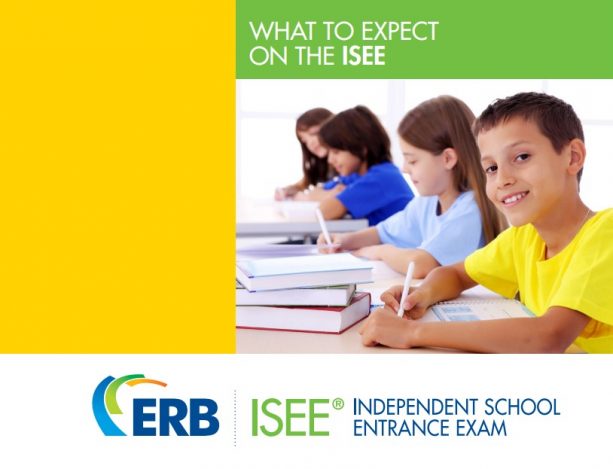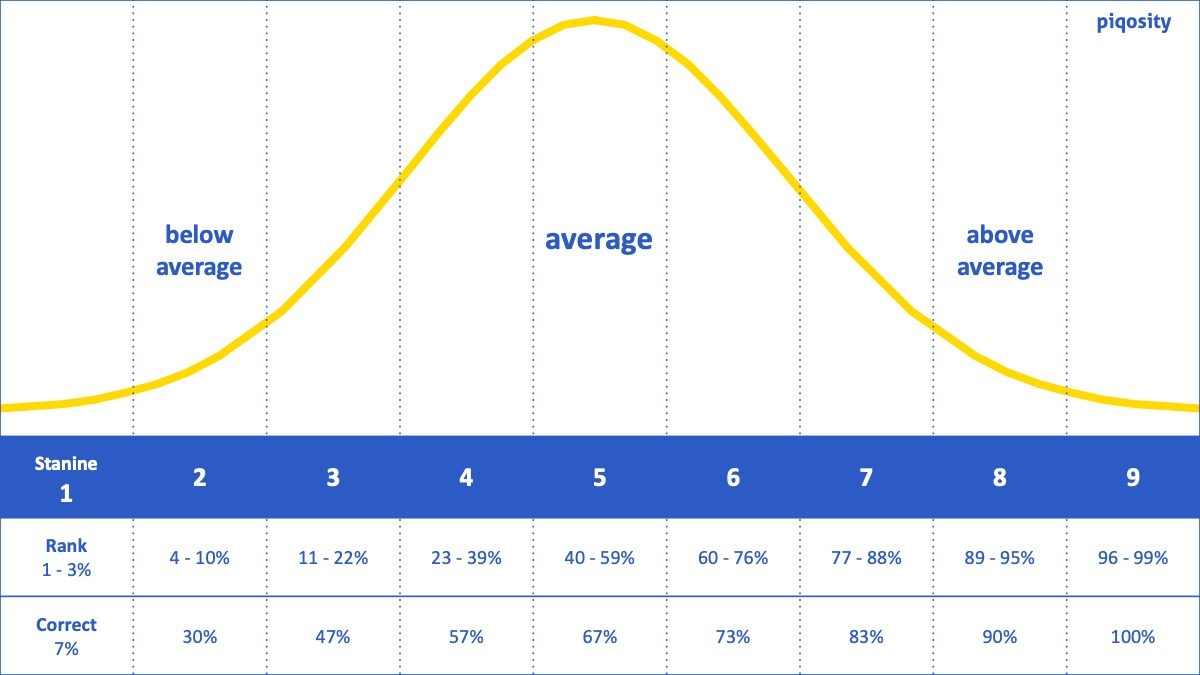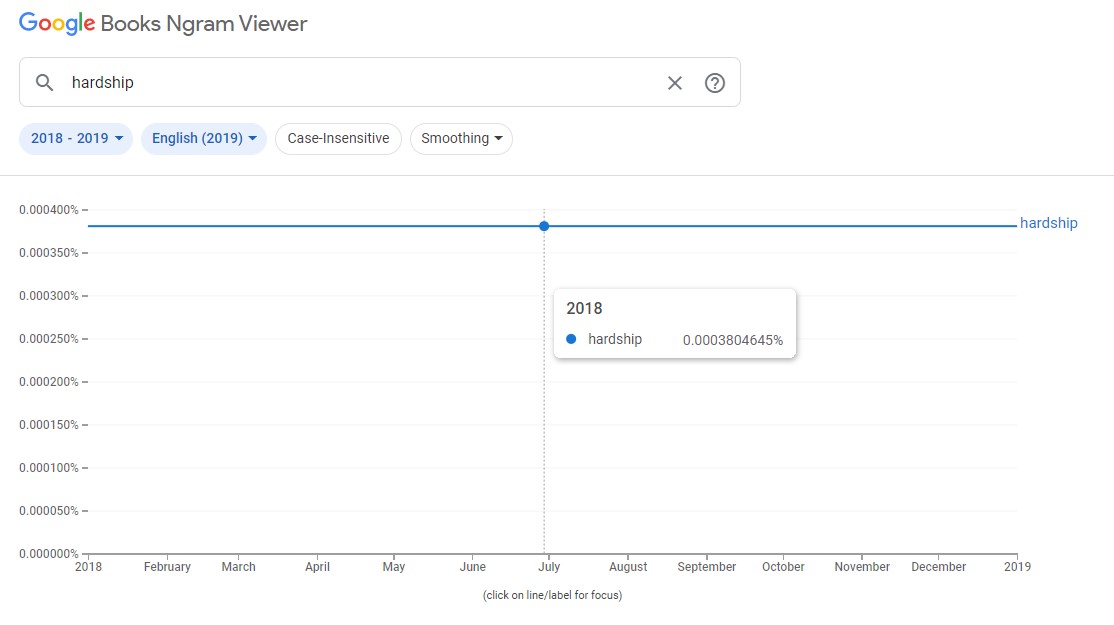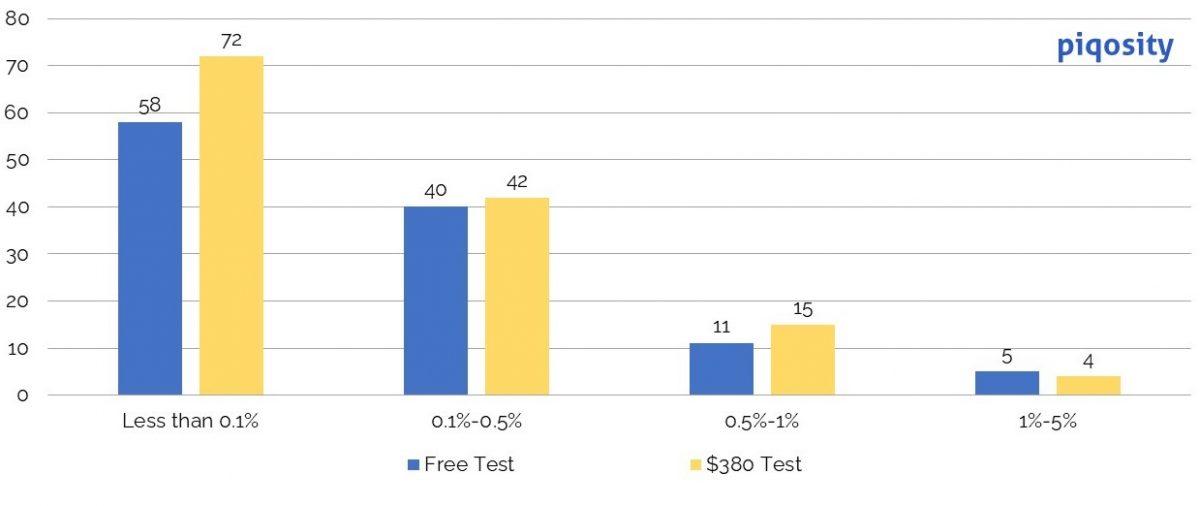The Independent School Entrance Exam (ISEE) Lower Level is a popular admissions test taken by American students applying to private US middle schools for grades 5 and 6. It is developed and marketed by the non-profit Educational Records Bureau (ERB).
Students have about 2.5 hours to complete the 117-question Lower Level ISEE, which is comprised of 4, separately scored sub-tests and a non-scored essay:
- Verbal Reasoning (20 minutes, 34 questions)
- Quantitative Reasoning (35 minutes, 38 questions)
- Reading Comprehension (25 minutes, 25 questions)
- Mathematics Achievement (30 minutes, 30 questions)
- Essay (30 minutes, 1 prompt + 2 pages)
In this article, we’re using official ERB practice tests to dive into the details of the ISEE Lower Level exam and uncover exactly what students are tested on.
What’s a Good Score on the ISEE?
Before we explore the content tested on the ISEE, here’s a brief introduction to the scoring of the ISEE exams.
For every section of the ISEE except the essay, students receive a score between 1 and 9 called a “stanine.” 1 is the worst score, and 9 is the best score.
- Stanine scores of 1, 2, and 3 represent the bottom 25% of test-takers.
- Stanine scores of 4, 5, and 6 are average and represent the middle 50% of test-takers.
- Stanine scores of 7, 8, and 9 are the highest and represent the top 25% of test-takers.
The ISEE, like most standardized tests (including the ACT and SAT), is a peer-normed test, meaning that students are scored relative to each other. Specifically, students taking the ISEE are scored relative to all students who took the ISEE over the past 3-years, which is called the “norm group.” Note that there’s no need to sabotage a friend’s scores, because the norm-group does not include the current year of test-takers.
We Analyzed ERB’s Official Practice Tests to Identify What’s Tested and How

The second practice test is full-length but only available as part of a $380 package sold exclusively by a for-profit test prep company. We think it’s unethical and usurious to charge $380 for the only publicly-accessible full-length ISEE practice test. Nevertheless, we allowed ourselves to get gouged so that you wouldn’t have to.
We analyzed both the free test in the WTE document (“free test”) and the $380 test (“$380 test”) that is only available behind a paywall from Test Innovators. Our summary analysis from each test follows below.
How to Access Official ISEE Practice Questions for Free
In the revision of the ERB’s What to Expect on the ISEE PDF from summer of 2020, ERB removed all of the 32 sample test questions. It didn’t remove those questions because they were out of date. It removed them so that it could charge $380 for them—in fact, nearly 60% of the formerly free practice questions now appear in the $380 test.
Analysis of the $380 test found that these formerly free practice questions are near perfect examples of what to expect on the ISEE in terms of difficulty. Our advice: skip the $380 test and simply download a previous year’s “What to Expect on the ISEE” for free (or look into Piqosity’s ISEE Lower Level course that comes with several practice tests for less than a third of the price). All analysis below uses excerpts from the free WTE document.
What is Tested on the ISEE Verbal Reasoning Section?
The first section of the ISEE is Verbal Reasoning, which lasts 20 minutes and includes 34 multiple-choice questions. There are two question types—synonyms and sentence completions. Both question types test a student’s ability to recognize and use vocabulary.
What We Learned from the ERB’s Official Materials for Verbal Reasoning
Students are tested on their ability to define and/or use 153 vocabulary words, which show up as synonyms, fill-in-the-blank sentence completions, and their answer choices:
- These words can be very difficult, and on average appear in 0.0024% of all the words that comprise Google’s digitized book library.
- The vocabulary words are fairly evenly distributed between nouns, verbs, and adjectives.
- The construction of sentence completion questions are mostly comparing, contrasting, or cause-and-effect, with an emphasis on contrasting.
ISEE Vocabulary Words are Difficult
To objectively analyze the difficulty of the vocabulary words, we examined every word using the Google Books Ngram Viewer, which details how frequently a word is used in literature published within a range of years as a percent. This analysis showed that the ISEE words appear in about 0.0024% of Google’s database, which includes words like “dangerous” and “hardship.”
For example, the word “oblige” comprised just 0.0002% of the published words in Google’s database in 2019. By contrast, the word “the” represents 4.2% of the words in that same database.
The following histogram shows the number of words in each category (note that a lower percentage means a less commonly used and therefore more difficult word).
Our analysis shows that the $380 test uses a similar level of vocabulary words to the free test.
To put this data in context, a word like “regard” (from the $380 test) appears approximately 0.005% of the time while a word such as “cure” (from the free test) appears approximately 0.001% of the time. This means that the word “oblige” is 5 times more common! This finding also aligns with the intuition that many people have about these words.
On average, the $380 test uses words that show up 0.002% of the time, while the free test uses words that show up 0.003% of the time. This is not a particularly large difference, but it does illustrate that the $380 test has statistically less common words than the free test.
Distribution of Nouns, Verbs, and Adjectives on the ISEE Verbal Reasoning Section
| Part of Speech | Free ISEE Test | $380 ISEE Test | Average |
| Nouns | 32% | 24% | 28% |
| Verbs | 36% | 38% | 37% |
| Adjectives | 36% | 38% | 35% |
Sentence Structure of Fill-in-the-Blank Verbal Reasoning Questions
The ISEE Lower Level test contains sentence completion questions that use only one blank. The sentences can be broken down by type, which can be helpful in teaching students what key words to look for to better understand what the missing word might be (key words are bolded in the samples below):
- Compare and Contrast – “Unlike other great apes, which are social, orangutans are —– creatures, except for playful juveniles and mothers with babies.”
- Similarity – “Many people raise their voices in an argument, as though higher volume —– a greater ability to persuade.
- Cause and Effect – “The article on gene splicing was so —- that only a handful of the students were able to understand it.”
- Definition or Explanation – Poet-novelist Rita Dove, former United States Poet Laureate, was the —- of the 1966 Heinz Award in the category of arts and humanities.”
| Sentence Type | Free ISEE Test | $380 ISEE Test | Average |
| Compare and Contrast | 46.67% | 40% | 43.34% |
| Similarity | 33.33% | 26.67% | 30% |
| Cause and Effect | 6.67% | 46.67% | 26.67% |
| Definition or Explanation | 6.67% | 0% | 3.33% |
What is Tested on the ISEE Quantitative Reasoning Section?
The second section of the ISEE is Quantitative Reasoning, which lasts 35 minutes and includes 38 multiple-choice questions. Many students consider Quantitative Reasoning to be the most challenging section of the ISEE.
What We Learned from the ERB’s Official Materials for Quantitative Reasoning
- The average question difficulty is a 3.5 out of 5 (see description below).
- Including answer choices, there are 1.17 graphics per question.
- Perimeter, area, and angles represented the most frequently tested concepts.
We used two metrics to create a 1-5 difficulty scale for the quantitative reasoning math questions.
- Length of time required to read and solve the problem.
- Number of distinct concepts required to solve the problem.
For example, we would rate the single concept question below as a 2 out of 5 for difficulty:
- Which is a value of x in the math equation 15 = 3x + 3?
- 1
- 2
- 3
- 4
This problem is simply asking students to solve for a specific value of x. The student would need to understand balancing algebraic equations, but simply subtract 3 from both sides of the equation and then divide by 3 to find that x = 4. Since this problem requires only basic arithmetic and one concept area, it is slightly below average difficulty.
We would rate this multi-step, multi-concept question a 4 out of 5 for difficulty:
- Ms. Hammond put the names of all her students in a hat. The probability that she will pull out a boy’s name at random is 3 out of 7. There are 12 girls in the class. How many boys are in Ms. Hammond’s class?
- 3
- 4
- 9
- 11
This problem is clearly much harder than many others on the exam. First, the student must understand the concepts of probability, complementary counting, and setting up proportions to solve this problem. If there are 3 out of 7 boys, then there are 4 out of 7 girls in the class. This proportion must be equal to 12 girls, so the student must multiply the proportion by 3 to find that there are 12 girls out of a full class of 21. Then, the student must finally realize that the number of boys must also be scaled up by 3 to find that there are 9 boys in the class of 21 students. This thought process is significantly more challenging and would present issues for students much older than those who take this test. However, the core math behind this problem is largely contained within probability. So, it received a difficulty rating of 4 out of 5.
With the two metrics mentioned above, the average difficulty of all the questions from both the ISEE Lower Level free test and the $380 test was 3.46.
Graphics Make Questions More Manageable
The number of graphics on each test also plays a role in how students understand and interact with the math tests as a whole. Graphics, in our experience, generally aid students to better understand the problem and have a more concrete representation of the problem at hand.
Across both the free and $380 test, we found that there was an average of 42 graphics in the Quantitative Reasoning section or 1.17 graphics per question including the answer choices.
| Free ISEE Test | $380 ISEE Test | Average | |
| Number of Graphics | 18 | 66 | 42 |
| Graphics per Question | 0.51 | 1.78 | 1.17 |
Tested Math Topics and Question Counts on the ISEE Quantitative Reasoning Section
| Category | Free ISEE Test | $380 ISEE Test | Average |
| Arithmetic Word Problems | 3 | 4 | 3.5 |
| Balancing Algebraic Equations | 1 | 7 | 4 |
| Combinations | 0 | 1 | 0.5 |
| Data Analysis | 4 | 4 | 4 |
| Distance, Rate, & Time | 1 | 0 | 0.5 |
| Factors & Multiples | 1 | 0 | 0.5 |
| Fractions & Decimals | 1 | 3 | 2 |
| Function Notation | 1 | 1 | 1 |
| Geometric Notation | 1 | 1 | 1 |
| Mean, Median, Mode, Range, & Weighted Average | 1 | 0 | 0.5 |
| Polygons: Angles, Perimeter, and Area | 5 | 4 | 4.5 |
| Probability | 2 | 2 | 2 |
| Ratios & Proportions | 3 | 3 | 3 |
| Sequences | 2 | 2 | 2 |
| Solid Geometry: Surface Area and Volume | 3 | 6 | 4.5 |
| Systems of Linear Equations | 1 | 0 | 0.5 |
What is Tested on the ISEE Reading Comprehension Section?
The third section is Reading Comprehension, which lasts 25 minutes and includes 25 multiple-choice questions. The questions are evenly distributed among 5 reading passages.
What We Learned from the ERB’s Official Materials for Reading Comprehension
- The average passage length is 350 words across 48 lines.
- The average Flesch-Kincaid grade level is 3.08 (third grade).
- The types of passages were generally narrative (2), social sciences (1), and Humanities (2).
| Data Category | Free ISEE Test | $380 ISEE Test | Weighted Average |
| Total Number of Lines | 144 | 285 | 222.33 |
| Total Number of Words | 1064 | 2092 | 1578 |
| Words per Passage | 266 | 418.4 | 350.66 |
| Flesch Kincaid Score | 2.825 | 3.28 | 3.08 |
The Flesch-Kincaid grade level score is a measure of the required grade level of education for a person to understand a passage based on the sentence length and number of syllables in the words; longer sentences and more syllabic words add up to make a more difficult passage. This analysis showed that the ISEE Lower Level reading passages are about a 3rd grade difficulty level.
Reading Comprehension Subject Matter
The subject matter of the reading passages can also affect difficulty level. For example, narrative fiction passages tend to be more familiar to students and easier for them to digest. Conversely, dry science passages can often be more difficult for students to remain engaged and understand. We split the passage types into 3 main categories:
-
-
- Narrative
- Social Science
- Humanities
-
| Passage Type | Free ISEE Test | $380 ISEE Test | Average |
| Narrative | 2 | 2 | 2 |
| Social Science | 1 | 1 | 1 |
| Humanities | 1 | 2 | 1.5 |
ISEE Lower Level Reading Comprehension Question Types
Each of the 6 Reading Comprehension passages is followed by 6 questions. There are six types of questions.
- Main Idea – “The primary purpose of the passage is to”
- Supporting Ideas – “The author caused the larvae to decorate their cocoons with stripes by”
- Inference – “What probably led the author to experiment with caddis larvae”
- Vocabulary In Context – “In line 4, “minute” most nearly means”
- Organization and Logic – “Which best describes the organization of lines 8-17”
- Tone, Style, and Figurative Language – “The author’s tone when discussing the news media is best described as”
Our analysis shows that not all types of questions are present for every passage. Supporting Ideas questions occur the most often (>1 per passage) and tone, style, and figurative language questions occur the least often—only making an appearance once on about half of the passages.
| Question Category | Free ISEE Test | $380 ISEE Test | Average per Test |
| Main Idea | 20% | 16% | 18% |
| Supporting Ideas | 30% | 40% | 35% |
| Inference | 25% | 16% | 20.25% |
| Vocabulary | 15% | 12% | 13.5% |
| Organization and Logic | 5% | 4% | 4.5% |
| Tone, Style, and Figurative Language | 5% | 0% | 2.5% |
What is Tested on the ISEE Mathematics Achievement Section?
The fourth section is Mathematics Achievement, which lasts 30 minutes and includes 30 multiple-choice questions. Students generally find the Mathematics Achievement section easier than Quantitative Reasoning. However, our analysis shows that while the tested concepts in Mathematics Achievement may be generally easier than Quantitative Reasoning, more steps are often required to get the correct answer.
What We Learned from the ERB’s Official Materials for Mathematics Achievement
- The average question difficulty is a 2.96 out of 5 (see description of methodology above under Mathematics Achievement).
- Including answer choices, there are 0.47 graphics per question or 60% fewer than in Quantitative Reasoning.
- Fractions, decimals, and area represented the most frequently tested concepts.
Like for the Quantitative Reasoning portion, we analyzed the Mathematics Achievement section’s:
- Length of time required to read and solve the problem.
- Number of distinct concepts required to solve the problem.
At just 0.47 graphics per question, there are fewer graphics in Mathematics Achievement versus Quantitative Reasoning.
| Free ISEE Test | $380 ISEE Test | Average | |
| Number of Graphics | 8 | 18 | 13 |
| Graphics per Question | 0.32 | 0.6 | 0.47 |
Tested Math Topics and Question Counts on the ISEE Mathematics Achievement Section
In comparison to the Quantitative Reasoning section, the Mathematics Achievement section tests a wider range of topics across the board.
| Category | Free ISEE Test | $380 ISEE Test | Average |
| Arithmetic Word Problems | 1 | 3 | 2 |
| Balancing Algebraic Equations | 3 | 3 | 3 |
| Data Analysis | 2 | 4 | 3 |
| Distance, Rate, & Time | 1 | 0 | 0.5 |
| Estimation & Rounding | 1 | 2 | 1.5 |
| Factors & Multiples | 0 | 2 | 1 |
| Fractions & Decimals | 4 | 3 | 3.5 |
| Function Notation | 0 | 3 | 1.5 |
| Linear Equations & Their Graphs | 1 | 0 | 0.5 |
| Mean, Median, Mode, Range, & Weighted Average | 1 | 0 | 0.5 |
| Number Lines | 1 | 2 | 1.5 |
| Number Types | 2 | 0 | 1 |
| Order of Operations | 1 | 0 | 0.5 |
| Percent of Change | 0 | 1 | 0.5 |
| Polygons: Angles, Perimeter, and Area | 4 | 4 | 4 |
| Probability | 1 | 2 | 1.5 |
| Ratios & Proportions | 1 | 0 | 0.5 |
| Sequences | 1 | 0 | 0.5 |
| Triangles: Types and Rules | 0 | 2 | 1 |
What is Tested on the ISEE Essay?
The essay is the fifth and final section of the ISEE Lower Level, but it is not scored. Students are allowed 30 minutes to write up to two pages on a specific topic.
Their response is sent directly to schools. Schools use the essay to get a literally-unadulterated look at a student’s writing ability and thought process.
Click here for a more thorough look at the ISEE Essay from our ISEE Ultimate Prep Guide.
Prepare for the ISEE Lower Level with Practice Tests
Our opinion is biased, but we don’t think you should spend $380 at Test Innovators just to acquire a single, recycled test from ERB. While the $380 test is slightly more difficult than the free test for Verbal Reasoning and Reading Comprehension, you can understand that difficulty just by downloading last year’s free “What to Expect on the ISEE” that includes excerpts from the $380 test or by taking Piqosity’s practice tests!
Along with our full-length, online ELA and Math courses for grades 6-11, we offer full ISEE test prep courses for the lower, middle, and upper level ISEE, each of which includes several practice exams, dozens of concept lessons, personalized practice software, and more.
If you’re ready to get started, you can try out all of Piqosity’s features with our free community account. With a community account, you have access to two, absolutely free ISEE practice tests! When you’re ready to upgrade, Piqosity’s year-long accounts start at only $89.
More Educational Resources by Piqosity:





